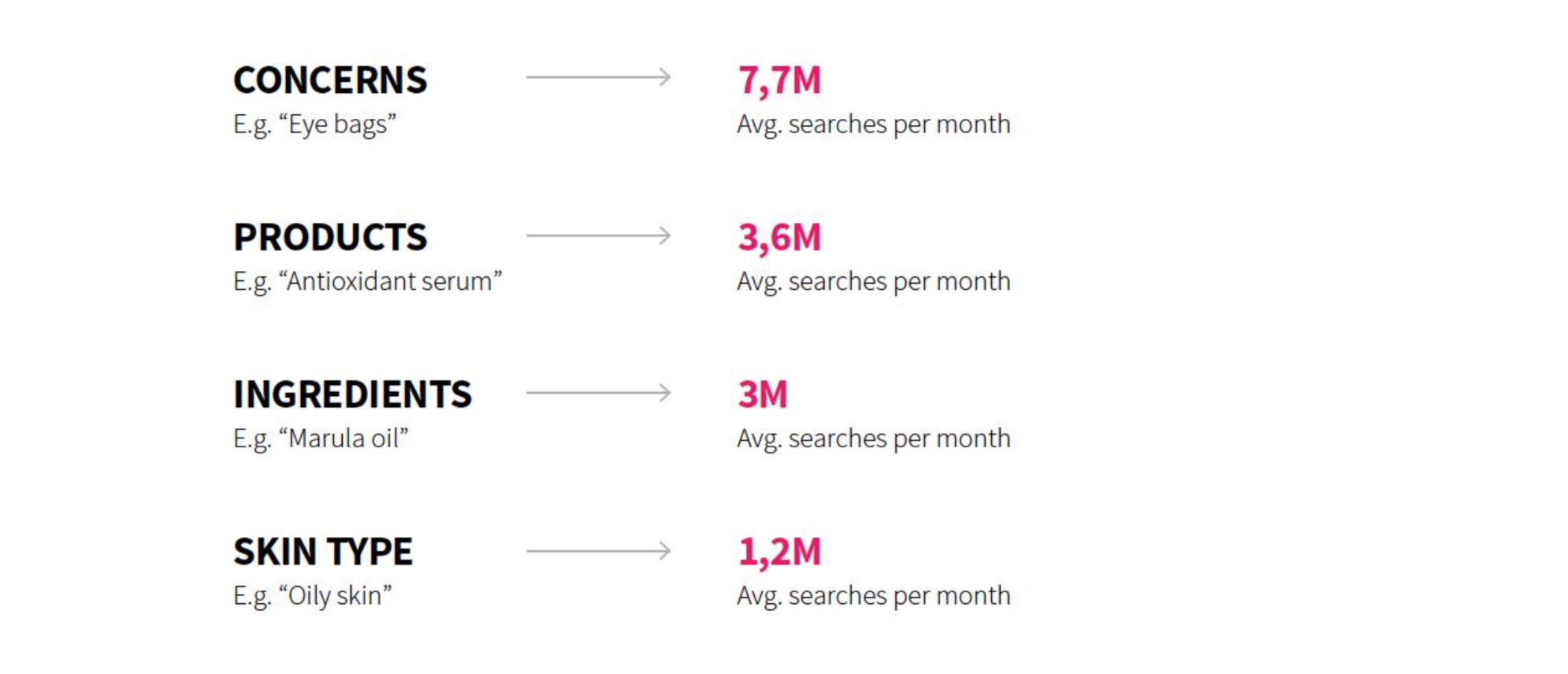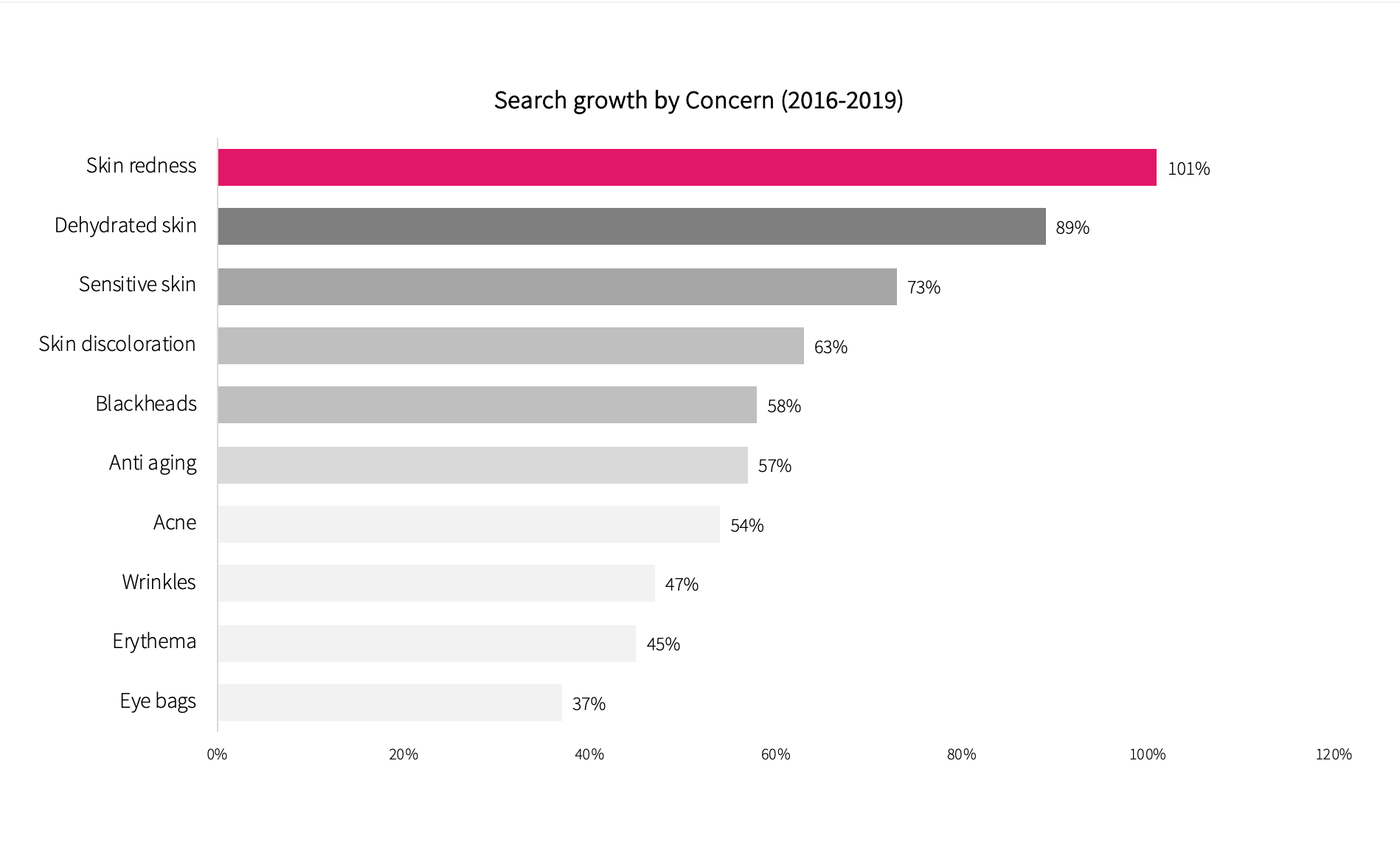
Consumers
Google is the New Dermatologist. Here’s How Skincare Brands Can Make the Most of It
by
Benjamin Dubuc | April 30, 2020
Skincare brands should proactively identify and anticipate consumer needs. The second set of insights from DLG’s latest report, “The Online State of Skincare Brands,” offers leads on how brands can make better use of search optimisation.
What are my consumers searching for? What are their concerns? What are they trying to solve? These are some of the questions that the second set of insights from “The Online State Of Skincare Brands” report answers.
DLG's (Digital Luxury Group) research takes a look at the online performance of 28 premium beauty brands with skincare as their main product. Analysis of global English Google searches suggests that overall online interest for skincare brands is growing and that over the past three years, their search volumes have significantly increased. Even though new skincare brands like Drunk Elephant and Glossier have the fastest growing search demand, established brands such as Neutrogena, La Roche-Posay and La Mer are keeping pace with the new entrants.
Deep-diving into what skincare consumers search, based on monthly average search volumes in 2019, our study indicates that 58 percent of users searched using branded keywords like Glossier.
The remaining 42 percent of users searched based on concerns, product type, ingredients and skin type related keywords, meaning that consumers performed more than 15.5 million generic searches on average per month in 2019.

Source: Google Keyword Planner, last 12 months.
Consumers’ New Dermatologist? Google.
Consumers are not shy to express even their most personal problems on Google. In 2019, every month there were on average over 7.7 million English searches globally related specifically to skincare concerns, such as “eye bags,” “wrinkles,” and “erythema” among others.
In 2019, the three most-searched skincare related concerns in were:
- Acne +3.2M searches per month
- Blackheads +1.7M searches per month
- Eye bags +970k searches per month

Image: DLG/Google.
Consumers are literally using Google as their dermatologist by asking questions related to intimate skincare problems.
Search Enables Identification of Upcoming and Growing Concerns
Skincare brands should proactively identify and anticipate their consumers’ needs in order to be able to put in place the necessary product and merchandising strategies to address them. With a true consumer-centric approach, skincare brands can leverage their positioning and increase long-term customer loyalty.
The top five growing skincare related concerns among consumers:

Credit: DLG.
Brands Play An Important Role in Today's Society
In these challenging times, it’s more crucial than ever for brands to listen to what consumers want and need. We’ve been seeing great examples of skincare brands such as Estée Lauder, Clarins, L'Occitane and L’Oréal, taking action to help communities,
However, brands don’t need to wait for a crisis in order to help. They can provide assistance to their consumers in everyday life as many of them turn to search looking for help all year long.
By looking at search insights, skincare brands can identify what their consumers’ concerns are and invest massively in content that will provide meaningful assistance during all moments.
What Should Skincare Brands Do?
Our search results analysis has shown us that most of these queries are addressed by publishers' websites, such as Healthline.com and Allure.com, or even the well-known Mayoclinic.org. This leaves a huge opportunity for skincare brands to either create strategic partnerships with these websites, or surpass them at SEO (Search Experience Optimisation).
Be Helpful, Show Up and Wise Up
Brands should identify consumers’ needs and create helpful content to ensure that they’ll be there for them in their time of need.
Search experience optimisation can help you:
- Use search insights to inform your content strategy
Assess all the questions people are asking for a specific topic, and what they are expecting as a result. - Make sure your content is user-friendly, easily accessible and easily readable
Don’t forget that content is not only the copy-- it can be videos, infographics, podcasts and more. - Maximise your visibility, be there when they need you
Keep your content updated and amplify it through paid search.
To access the part 1.2 of the “Category Search of The Online State Of Skincare Brands” report, download the report via the link below.
DLG Skincare Report Part 1.2
Cover image credit: L'Oreal.

